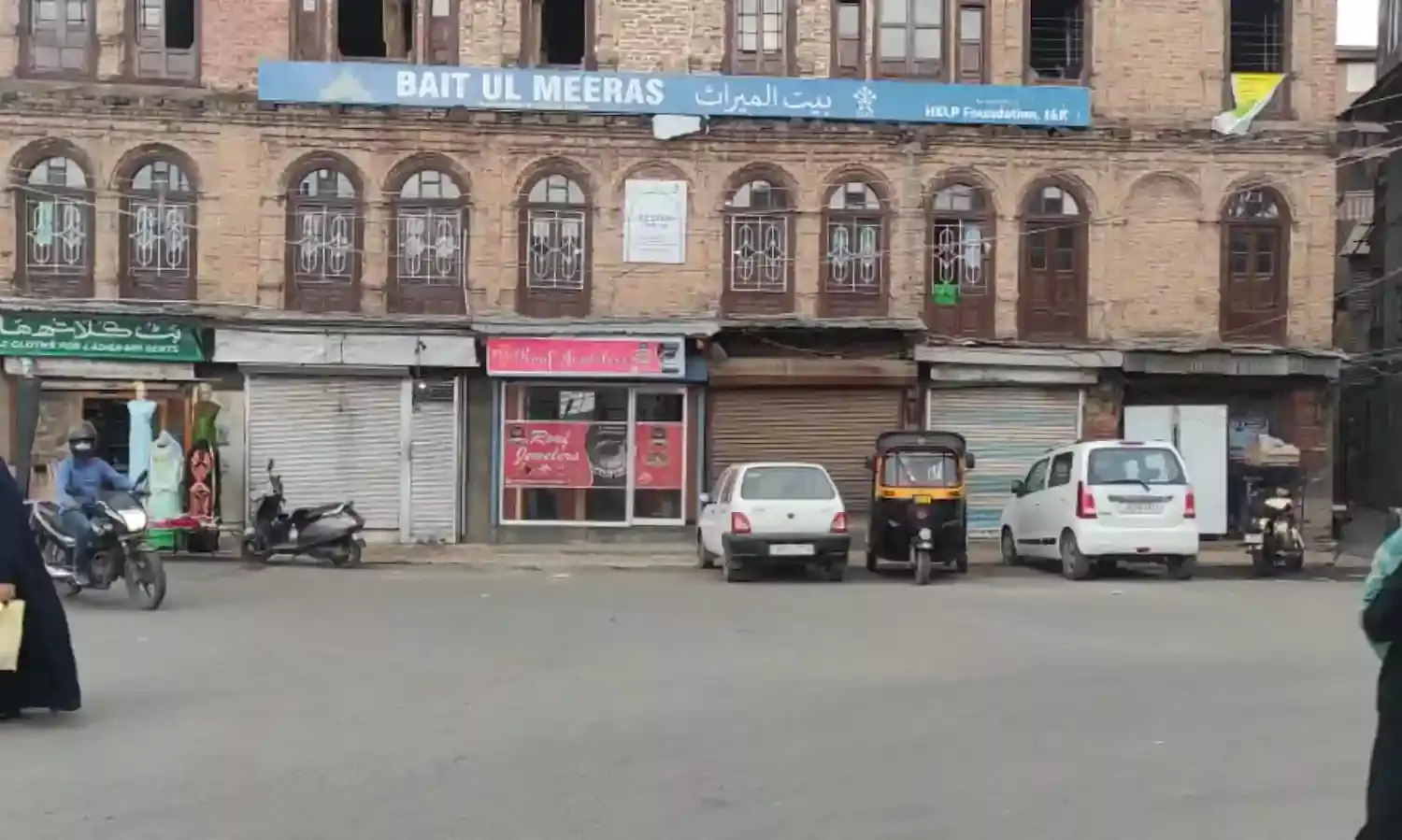The Valley’s House Of Heritage
Srinagar’s Bait-ul-Meeras, is now becoming a must visit tourist spot

The Bait-ul-Meeras, also known as the House of Heritage, is a historic building located in the Aali Kadal area of Srinagar. This structure has a rich cultural heritage and is considered as one of the oldest surviving residential buildings in the region.
The building has been recently transformed into a crafts community and museum to preserve the cultural heritage of the Valley, and will also serve as a venue to educate the younger generation on the subject. The structure has undergone several renovations and changes, but its basic structure and design have remained largely unchanged.
This project is run by Help Foundation, a local N.G.O. which aims to preserve the culture and heritage of the Valley. Bait-ul-Meeras has been renovated to its original state and converted into a space that showcases the traditional arts and crafts of the region, including carpet weaving, handmade jewellery, papier mache, and embroidery.
The museum also features exhibits that provide an insight into the rich history of the region, and the daily lives of its people. The four-story house is the best illustration of the Valley's exceptional structural plan.
There are many elements here that can be traced back over a hundred years, including adornments, flatware, and clothing. For the display, these artefacts were gathered over a one year span.
The objective of mounting this exhibit is to showcase the land’s rich legacy as well as raise awareness to show how “detached we are from our legacy. Our director, Nighat Shafi, needed to accomplish something extraordinary for the children, and she gave the kids this display as a present,” said Hakim Javid, the facilitator of Bait-ul-Meeras.
He said the team was lucky to find a remarkable structure to fulfil their objective in the old city. “We needed to open a display in the city, and we were lucky to find a construction with a rich past. Since it was built and lived in between 1850 and 1925. Three to four generations have lived there," he said, adding that this exhibition is an essential part of learning, which many youngsters are missing these days.
According to Hakim Javid the antiques displayed are precious and have critical importance. “We have attempted to show things we have abandoned. For instance, we have kept the Maharaja’s loft, which was given as a gift,” he said.
Farooq Ahmad Qasim, the proprietor, said that his family bought the home after 1947. “Salam Joo Koul, a money lender, who was also said to be one of Maharaja Hari Singh's lenders, constructed this manor in 1925. He offered it to a Wani family before 1947, and I bought it from them,” said Qasim.
He added that now more children have begun to come over to see the traditional artefacts. Bait-ul-Meeras is a must-visit destination for anyone interested in learning more about the rich culture and history of Kashmir. The place has been carefully curated and preserved to showcase the best of Kashmiri artefacts, offering visitors a unique and enlightening experience.
As you walk through the exhibits, you will be struck by the intricate craftsmanship and attention to detail in each piece. It shows that artisans behind these pieces were passionate about their work and took great care to preserve the traditions and culture of their ancestors.
One of the most fascinating displays was a collection of wooden artefacts. These include windows, doors, and furniture. Each piece was expertly carved, showcasing the rich heritage and culture of Kashmir. The throne of Maharaja Pratap Singh was particularly impressive, and viewers will feel a sense of awe and reverence for the history it represented.
The collection of traditional Kashmiri textiles, including the handwoven shuttle loom shawls, was also particularly noteworthy. It is amazing to see the skill and craftsmanship involved in their creation, and admire the dedication and passion of the artisans.
The interiors of the building are equally stunning, with intricate carvings and designs adorning the walls and ceilings. The traditional architecture of the building is a true representation of Kashmir's rich culture and history and offers a glimpse into the past.
Curators of Bait-ul-Meeras are passionate about the exhibits, and are eager to share their knowledge and expertise with visitors. You will be struck by how much the culture has evolved over the centuries. Many traditional crafts and techniques that have been passed down from generation to generation and are still being practised today. This is particularly evident in the collection of jewellery on display, which included intricate pieces made from precious stones and metals.
One of the most interesting exhibits was the collection of paintings and calligraphy that depicted various aspects of Kashmiri life and culture. From the stunning landscapes and vibrant colours of the paintings to the intricate calligraphy, each piece was a work of art that showcased the talent and creativity of the artists.
Another highlight is the display of traditional Kashmiri musical instruments. The intricate designs and craftsmanship of these instruments are truly a sight to behold, and represent the rich cultural heritage of the land.
In addition to the exhibits, the museum offers a variety of educational programs and workshops for visitors. From traditional weaving and spinning classes to music and dance performances, these programs offered a unique opportunity for visitors to immerse themselves in the culture and traditions of Kashmir.
The locals of Kashmir are reportedly very happy with the efforts of the Help Foundation in preserving the rich art and culture of the region. According to visitors, the young generation is particularly attracted to the place, with many of them eager to learn more about their cultural heritage.


